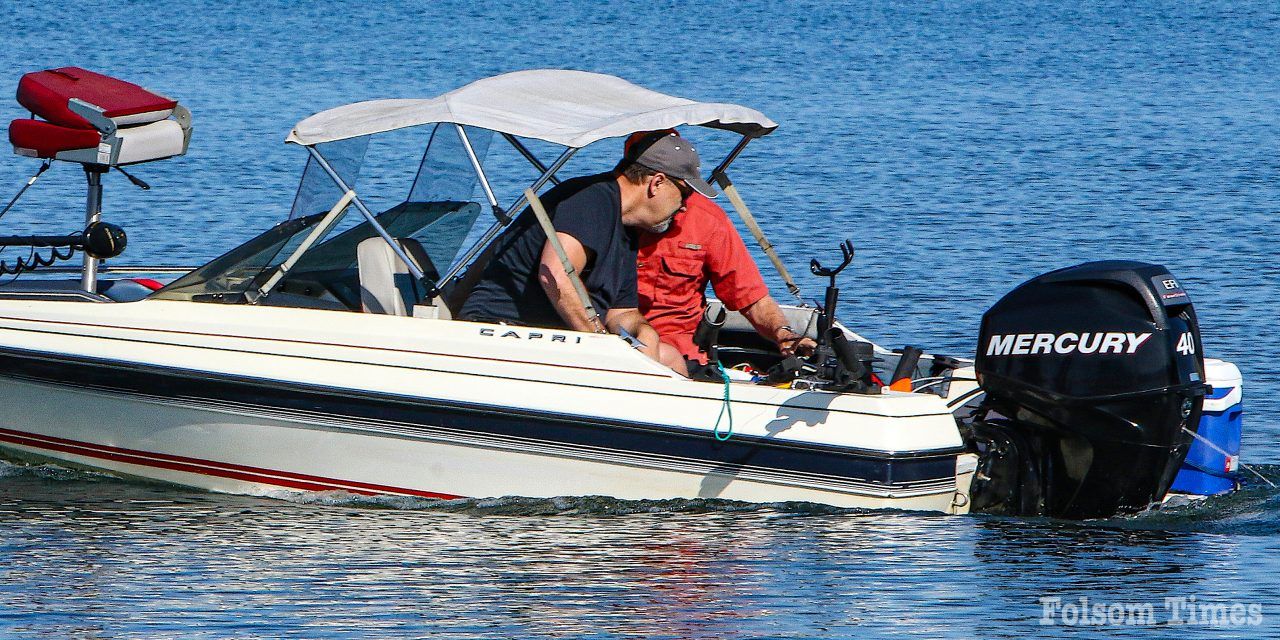The boat ramp at Folsom Lake Marina was one busy place over the recent weekend as the warm weather and impressive lake levels drew boaters out in force, for both recreation and sport both Saturday and Sunday.
While the annual Camellia Cup sailboat race was taking place on one area of the lake, vessels of all sizes, colors, makes and models were firing up their motors for the first time of the season. Boaters were doing so with caution, however, as the waters of Folsom Lake are littered with a great amount of debris from the winter storms.
“We’ve seen debris like this this time of year before, but this year, it’s bigger debris,” said Mark Werder, Regatta Chair for the Folsom Yacht Club. “It’s almost like whole trees are down here this year, instead of branches and normal stuff you’d see floating around.”
While the Regatta had many sets of eyes scanning its course for floating debris, for recreational boaters it was their own responsibility to do so Saturday as they hit the waters.
As a boat owner, striking a large limb or even a floating tree, not only poses a danger, it can prove very costly in repairs.
“Anywhere from $10-20,000 worth of damages, easily, in the blink of an eye,” said boater Troy Coray, one of the many who were cautiously taking to the water this weekend.
Officials from California State Parks and Folsom Lake State Recreation area were out in force over the weekend, making a vigilant effort to warn boaters of the hazards that lie just beneath the surface of the waters, as well as on top of it, surrounding it and flowing into it at a rate of 8,895 cubic feet per second.
The effort is already well underway to clear the lake of the debris. However, it’s a process that will take several weeks and possibly months to complete according to park officials.
With the record storms the area experienced this year comes a record amount of debris that has gone afloat after years of drought conditions. In some cases, entries felled trees have been swept up by the runoff and are lurking about throughout the lakes waters, waiting to ruin a day for a local boater.

“Those trees normally sit along the shoreline,” said Joshua Jaco of California State Parks. “If the water doesn’t come up high enough to take those out, they don’t enter the water system. Now that the water is coming up, it’s picking up debris from the last several years of low water and bringing it down into the main body of the lake.”
In addition to working to capture the floating debris, contractors are working daily cleaning up the shorelines of the lake of loose debris, hoping to prevent from entering the
“They’re slowly pulling all that debris off the lake, but it’s a laborious process and it’s going to take a little bit of time,” Jaco said.
Jaco added that the process will take months to completely clear all of the debris. Ultimately, the lake will need to reach its peak elevation, then begin to recede until waters will see far less of a risk. Until then, officials urge boaters to use caution to avoid having a bad, costly day.
As of today, boat launches in Granite Bay, Folsom Point, Rattlesnake Bar and the main ramp at Brown’s Ravine are in operation.




